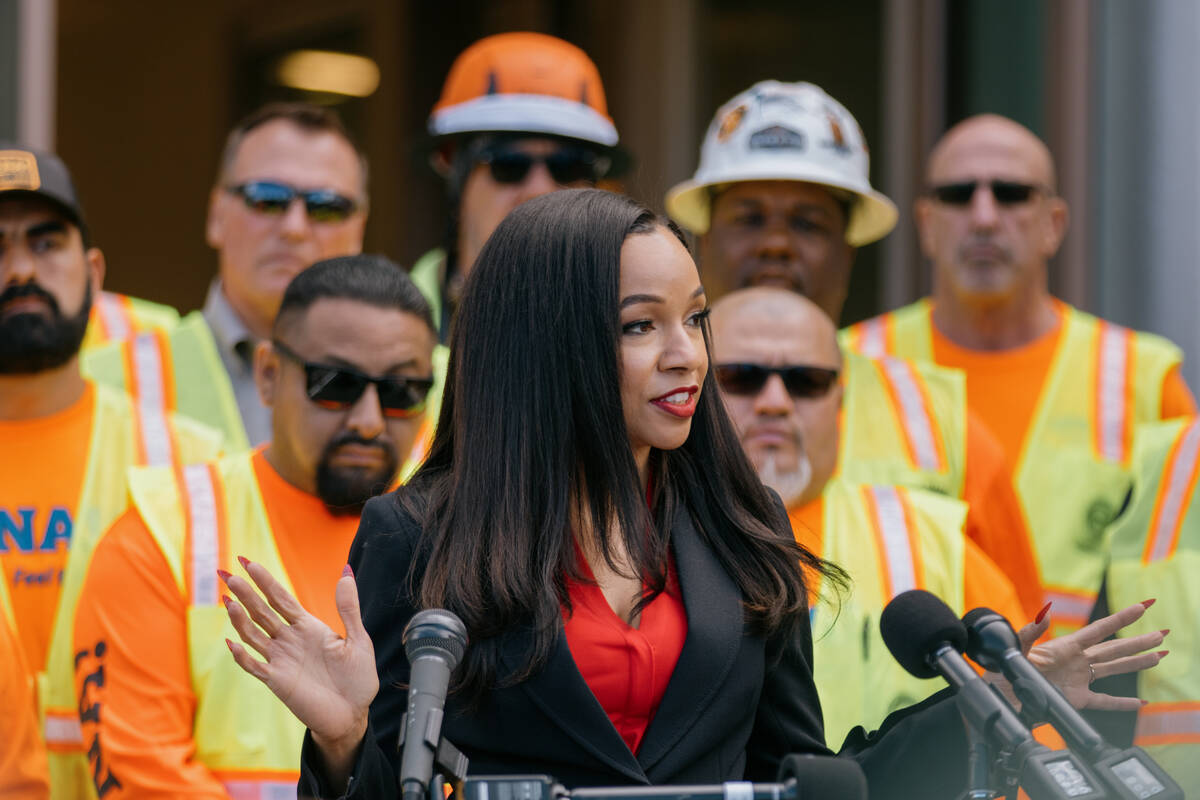Las Vegas Valley has been underbuilding homes for 15 years: UNLV report
The Las Vegas Valley hasn’t been building enough homes for about 15 years, according to a new report.
Looking at the average level of residential permits filed between 1995 and 2003 (omitting a period of economic downturn in 2004-09), beginning in 2010 there was a 64 percent drop in permits, nearly three times as large of a drop than the national average (23 percent) during that same time period, according to a new report from UNLV’s Lied Center for Real Estate.
Shawn McCoy, director of the center and author of the study, said there were a multitude of things that contributed to this sharp decline in homebuilding in the Las Vegas Valley and why the local market has yet to recover.
“At the national level the number of homebuilders declined 50 percent between 2007 and 2012,” he said. “Even since then, housing deficits continued due to persistent supply side headwinds. The construction sector faces persistent ongoing labor shortages. Credit is tight for development and construction loans. Supply chains were disrupted in 2020 and when inflation popped, the Fed(eral Reserve) then hiked rates in 2022 making it economically challenging to develop nearly every asset class.”
‘A unique challenge’
The housing market never returned to its equilibrium after the 2008-09 Great Recession, said McCoy, and the Silver State’s residential market faces challenges moving forward as the federal government controls nearly 90 percent of the land in valley and has been slow to release it, driving up land values.
“Nevada faces a unique challenge. You need land to build a house and we are running out,” he said. “The decreases in the amount of available land in Southern Nevada propped up land prices rendering many would-be developments economically infeasible. Southern Nevada inherited the worst possible scenario one could envision, limited land, higher land costs, higher interest rates, higher construction and material costs, increasing labor costs and higher insurance costs. This is a pure textbook case study of how to stifle the real estate market.”
Jim McDade, president of KB Home’s Las Vegas division, said they are doing everything they can to help lower costs to get people into their first homes — a market they focus on. Despite a difficult economic reality, he said they’re focused on reducing build times, increasing energy efficiency and using engineering — all to lower costs.
“The undersupply of housing in the valley is well-documented, and with land becoming increasingly scarce, homebuilders are facing greater challenges with increasing supply and affordability in the market,” he said.
Home prices have sat at a record high ($485,000) since the start of the year, according to Las Vegas Realtors, as supply continues to flood the market. And many potential homebuyers are locked into mortgage rates they got during the pandemic, which further constrains the supply of resale product. Mortgage rates also remain elevated due to inflationary pressures as they have not dipped below 5 percent since March 2022.
McCoy added that if the pace of construction between the years 1995 and 2003 had stayed on course, the data suggests an additional 281,381 residential structures would have been built between 2010 and 2025. He said home prices began to rise at an average annual rate of 7.2 percent between 2010 and 2025 and in contrast to that, between 1995 and 2003, home prices rose at an average annual rate of 4.7 percent.
Since 2010, annual home price appreciation is 52.3 percent higher than it was before 2003, added McCoy, however the pace of construction is 64.2 percent less when comparing the numbers over the same timeframe.
Housing market outlook
According to data from the Southern Nevada Home Builders Association, 11,988 building permits for new home construction were issued in 2024, slightly above the average for comparable years.
Tina Frias, chief executive officer for the Southern Nevada Home Builders Association, said releasing the federally controlled land to the private sector is key to solving the valley’s housing crisis.
“Housing constraints have persisted for quite some time in Southern Nevada, particularly for first-time homebuyers,” she said. “Land availability, elevated development costs, and the interest rate environment have created housing attainability challenges for many. The solution lies in working with federal, state and local leaders to expedite the release of more federal lands, reduce fees and streamline approvals, and incentivize development to foster innovation.”
The SNHBA anticipates the region will end 2025 with approximately 11,500 permits, which is a slight dip from last year, which is due to a slowdown in land purchases during 2022 and 2023.
Contact Patrick Blennerhassett at pblennerhassett@reviewjournal.com.





















